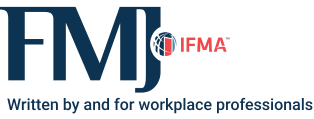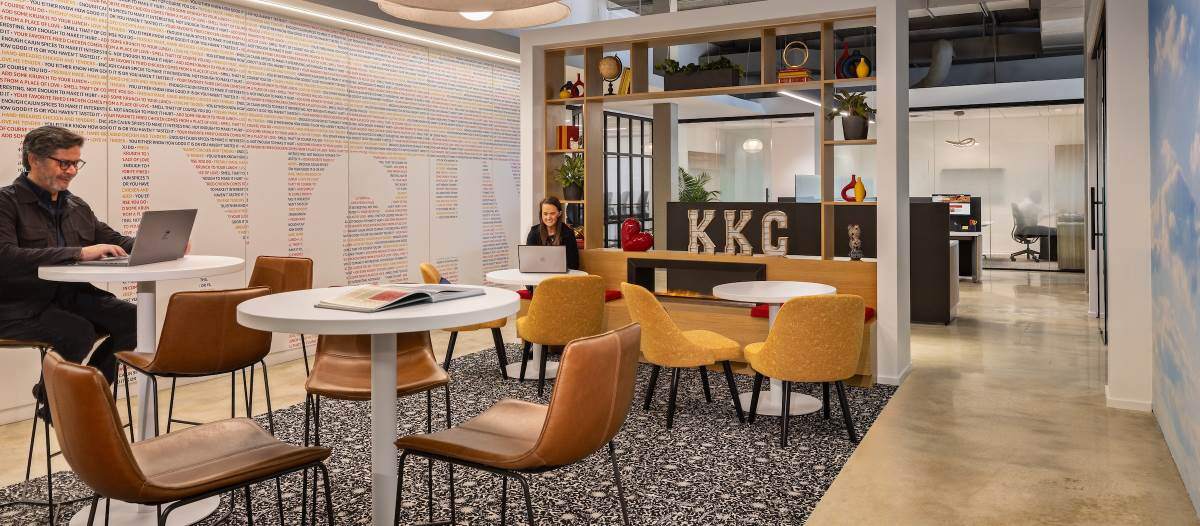The Emotional Punch List
Workplace’s forgotten strategy

Environmental changes affect how people focus, behave and interact. Leaders often lack strategies for managing these shifts. Many real estate advisors and facility managers focus on physical space while overlooking psychological and emotional needs. These strategy gaps leave employees resistant and teams unprepared for backlash. This delays progress, contributes to missed deadlines, and influences office use and satisfaction.
Leaders are encouraged to prepare the workforce for change before dramatically shifting gears if they want to avoid push back.Employees respond unconsciously to their environments. These responses can be brought into awareness. When this is widely understood, it leads to more conscious choices and better space utilization.
Experienced change strategists build plans supporting this discovery process end to end. These steps increase capacity, resilience and the likelihood of successful transformation. FM leaders are advised to budget resources to prepare colleagues to work in new environments.
What's an emotional punch list?Like a traditional punch list, an emotional punch list aligns project teams. It tracks progress and points out where projects are getting stuck. Monitoring emotions during projects helps real estate teams anticipate hurdles and discuss them. When teams have shared language, emotions are easier to talk about during planning. When progress is held up, it is a tool that can be used to share what is happening. It highlights when a pause is needed and when resistance needs to be managed through. Developing these capacities helps move activity forward with less discomfort. |
Validate premises
Guidance from brokers, designers, architects, furniture distributors and company executives are regularly sought. Designing and planning without employee input omits those who use the space most. Employee participation reveals false assumptions vendors and executives can make. It also offers a positive introduction to workplace transformation that prepares the workforce to appreciate the result.
Common concerns around letting employees take part are the time it takes, suggestions it generates and the loss of project control. While it takes time, this can be done in tandem with other scoping projects. When scheduled early on, it saves time and money that could be spent making changes later.
In his 2020 book, “The Practice,” author Seth Godin points out, “We all have a plan on how to make work better, or to change an organization we care about.” Inviting participation does not mean designing to individual specifications. If people expect their exact ideas to be implemented, they will be disappointed. Walking this tightrope is important.
Designing how employees share preferences is critical. Vision boards, Lego Serious Play, journals and TikTok-style videos are a few ways to gather data from a multigenerational, neurodiverse workforce. Sharing perspectives can raise awareness, generate enthusiasm and manage expectations.
A vision is strongest when it is inspired and shared by many people. Invite participation rather than hiding plans behind boardroom doors. Allowing employees to share and imagine new environments helps them adapt and embrace new ways of working.
Expand awareness
Working in new places can still bring unease, even though remote and activity-based work have been around for decades. The uninitiated assume everyone prefers to work in similar ways. Overwhelmingly, this is not the case.
Seeing varied preferences clarifies how complicated it is to provide inclusive workplaces. It is hard to overlook the wide variety of work styles once they are seen. It has a hidden benefit, as well: it nudges the workforce toward acceptance.
Input is most influential when it is well organized. Cluster analysis is an active technique in data mining. Findings often yield priorities leaders do not expect. Concerns and suggestions surface that real estate advisors and executives might otherwise overlook.
Develop capacity
Compelling data is a good start, but not enough to overcome emotional hurdles by itself. Environments hold emotional triggers. An emotional punch list helps identify emotions and triggers during change. Facility managers can learn to recognize hurdles and guide others through.
It is particularly tough when the organization’s leaders resist modifications. Albert Einstein said, “The world as we have created it is a process of our thinking. It cannot be changed without changing our thinking.” While it is tempting to bypass difficult conversations, there are better ways.
What is important for me to know about…. your office door?
Securing buy-in is a change strategists' superpower. They prepare plans to navigate through resistance. Those who specialize in workspaces understand how invisible factors like neurodiversity, environmental psychology (the study of transactions between individuals and their physical settings), and health factors play a role.
While internal change management teams may support some functions, it is difficult for them to remain objective, especially in the beginning. During early stages, they are preoccupied with how they will be affected. Since they already know the ”squeaky wheel” individuals in an organization, they tend to focus on them rather than the bigger picture. As such, they can impede progress rather than move it forward.
Independent change strategists act as fiduciaries. They work without conflicts of interest to guide decision makers end to end through this process. They:
-
are solution agnostic
-
enable employees to take part
-
build bridges between stakeholders and decision makers
-
harmonize perspectives during negotiations
-
generate the courage and capacity for change across the organization
Employees detach and attach to new workspaces more quickly with support before and after. Ideally, a workplace change strategist joins a cross-disciplinary team from the beginning and remains available as the workforce adapts to changes.
Getting readyThe best way for FMs to prepare others for change is to experience change themselves. Strong leaders develop personal awareness. See what happens when introducing a new environment to your work routine.
Experimenting with furniture, space and activity is an interactive and productive way to gain self-awareness and develop others. |
The corporate real estate ripple effect
Relationships between physical environments, social and environmental psychology exist. Taking a holistic approach dramatically impacts how organizations evolve. Better results emerge when interactions between people, places and spaces are considered.
Introducing new environments reshapes how people relate to colleagues and the company. They might interact and relate differently. They develop new behaviors. These shifts are the result of how their environment is interpreted.
Workplace policy and design changes disrupt more than office doors and furniture. In addition to colleague relationships, they impact:
- the talent a company attracts and retains
- other business relationships
- community perception
- investors’ returns
- the planet
Finding the way forward
FM teams can lead more successful workplace transformation projects by:
-
understanding how people interpret and process environmental changes
-
recognizing emotional milestones that accompany workplace transformation
-
dedicating change management resources to help navigate the emotional and socio-psychological barriers that impede progress
Real estate impacts the environment and social fabric of an organization. How it is governed influences what is expected, tolerated and not tolerated across the organization. Approaching workplace strategy holistically leads to more harmonious workplaces.
Planning for what people need physically, psychologically and emotionally leads to acceptance. Thoughtful change management strategies support individual productivity, team interactions and organizational culture. This improves business relationships with colleagues, customers, investors and communities.
FM teams benefit from working with change strategists and workplace advisory teams. These partnerships:
-
reduce delays caused by indecision and resistance
-
secure buy-in
-
support organizational resilience
-
lead to greater satisfaction and use
With the right mindset and change support, leaders are better served by brokerage and FM service providers. They are more influential among the C-suite, middle managers and employees. All this leads to better productivity, cost efficacy and respect in their organizations.

Joy Stephan is a change strategist, working directly with executives, real estate leaders, advisors and others. As founder and CEO of 20Chairs, she delivers strategy and coaching services to leaders preparing for change. Stephan is affiliated with several well-respected networks and consultants, including IFMA’s Workplace Evolutionaries, Outsource USA and TME Consulting Inc. Her work is informed by education in multiple disciplines, including a master’s of science degree in organizational change management.
References
Godin, S. (2020). The Practice. Penguin UK.,
Haynes, B. P. (2011). The impact of generational differences on the workplace. Journal of Corporate Real Estate.
Sharma, S., Nagar, A., Singh, L. P., & Singh, S. (2018). Occupational Hazards and Safety Measures for Archeologists. Humanizing work and work Environment (HWWE 2016): English, 432.
Einstein, Albert, linked from the Good Reads home page, Ibid. (accessed July 27, 2022)
Gifford, R., Steg, L., & Reser, J. P. (2011). Environmental psychology. In P. R. Martin, F. M. Cheung, M. C. Knowles, M. Kyrios, L. Littlefield, J. B. Overmier, & J. M. Prieto (Eds.), IAAP handbook of applied psychology (pp. 440–470). Wiley Blackwell. doi.org/10.1002/9781444395150.ch18
Inalhan, G. (2009). Attachments: The unrecognised link between employees and their workplace (in change management projects). Journal of corporate real estate.
Skogland, M. A. C., & Hansen, G. K. (2017). Change your space, change your culture: exploring spatial change management strategies. Journal of Corporate Real Estate.
Read more on Workplace and Occupancy & Human Factors or related topics Wellness and Well-being
Explore All FMJ Topics









